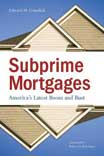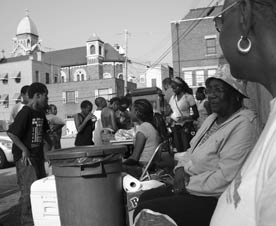A big issue in the mortgage-crisis debate is whether subprime lending led to an increase in homeownership. Gramlich wrote that between 1994 and 2005, the homeownership rate increased from 64 to 69 percent, and he attributes most of this increase to subprime lending. Gramlich argued that many people could not have achieved homeownership without subprime loans. But up to 30 percent of those who took out subprime loans to become homeowners could have qualified for conventional loans. The homeownership rate fell in 2006 and 2007 and probably will continue to fall. Gramlich implies that the benefits of increased homeownership created by subprime lending likely outweighed the costs. But it is highly unlikely that the factures in families and communities, the fiscal stress on local governments and school systems, the increase in crime, and the collateral damage to the U.S. economy are balanced out by a modest increase in the homeownership rate.
Gramlich’s book carries an unfortunate subtitle: “America’s Latest Boom and Bust,” suggesting that the mortgage crisis was caused by speculative fever of the kind that has plagued markets throughout history. This is Alan Greenspan’s explanation in a Dec. 7, 2007 article in The Wall Street Journal, in which he traces the mortgage meltdown to a global excess of savings that drove down interest rates and fueled a housing bubble. Greenspan is quoted as saying that “after a period of protracted adjustment, the U.S. economy, and the world economy more generally, will be able to get back to business.”
Greenspan’s view is self-serving. It gets federal regulators off the hook: there is very little we can do about global savings rates and the irrational exuberance that ensues. There is some truth to the claim that the run-up in housing prices stimulated subprime lending. Consumers and speculators in hot markets took out risky loans figuring they would take a ride on rapid housing inflation.
In fact, however, speculative fever is not the fundamental cause of the mortgage mess. Areas of the country that did not experience large price increases are, nevertheless, suffering from high foreclosure rates. The current rash of foreclosures was fundamentally caused by policy choices that freed up powerful market actors to exploit consumers and investors.
Gramlich outlined a basic set of regulatory reforms that would insure the end of exploitative predatory loans. I wish that politicians would read Gramlich’s book and be convinced by his careful empirical analysis of what needs to be done. In truth, however, the reason the federal government failed to act was not because decision makers lacked the empirical evidence so clearly laid out by Gramlich. Instead, Washington policymakers succumbed to a powerful mortgage industry supported by the prevailing free-market ideology. Until the American people take back that power, they will be forced to pick up the tab for the so-called “free” market.





Comments